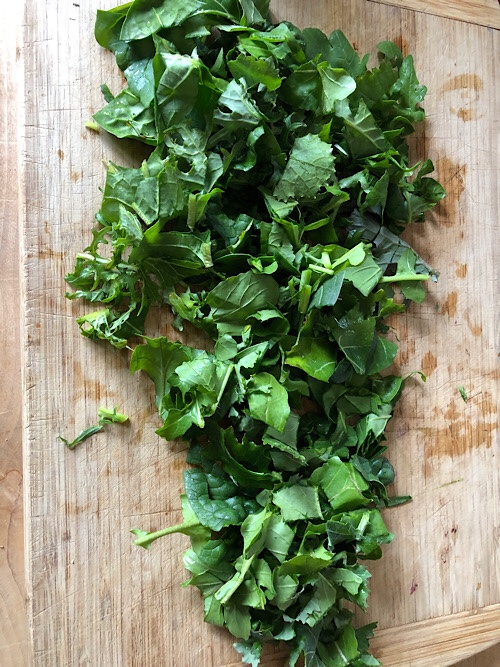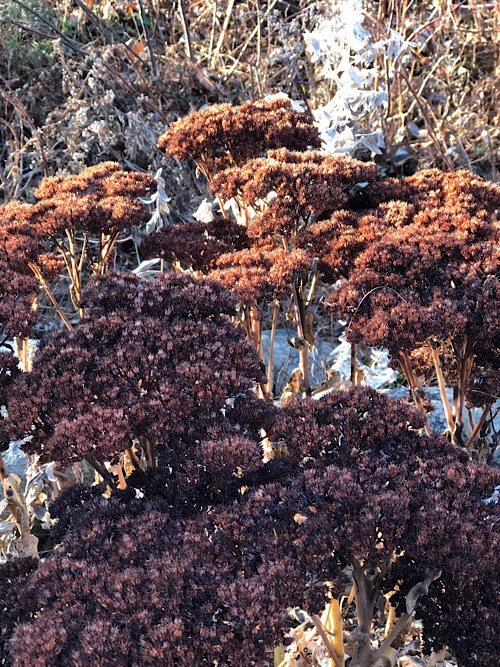After a few days of below freezing temperatures, we can still get greens from the hoophouse! Seems amazing.
Spinach, arugula, escarole, kale. And some baby claytonia.

our maine home – zone 5b
After a few days of below freezing temperatures, we can still get greens from the hoophouse! Seems amazing.
Spinach, arugula, escarole, kale. And some baby claytonia.

My new obsession. Recipe from Rowen White, indigenous woman and seedkeeper, who posted it on social media. I’ve made three batches now, fine-tuning each time. Here’s a few photos without going into the whole procedure.
Night before, feed my starter. I just store the scrapings from each time in my fridge, a technique I learned from Bake with Jack, UK, on YouTube. I love my starter. It’s so reliable.

Starter added to milled whole wheat flour.

Scrapings go back in the fridge for next time. Sometimes I wipe off the rim which can get gunky and very dried out. If things get too dirty looking, I transfer to a clean container, but not every time.

All ingredients: 3 cups flour, about 100 g of starter, one tablespoon honey, 1/2 tsp salt, 1 cup oat milk. I made two mistakes here: put the salt right on the starter (not it’s favorite substance) and added cold oatmilk (I really should warm it!). Nevertheless, everything proceeded just fine.

Initial dough ball is pretty dry and coarse. Let rest for 30-60 minutes. Then knead for five minutes. Then let rise for 8-12 hours.

After dough has risen, the texture is much softer and the sourdough action is apparent. Press down with fingertips to about 1″ in height. Then cut in rounds. I used a drinking glass.

Muffin rounds resting, cornmeal sprinkled above and below. The irregularly shaped ones are assembled from remnants of dough after cutting the nice rounds. Let these rise for awhile.

Cooling on a rack after cooking on the stovetop. I used a ceramic frying pan with lid. I cook three at a time for six minutes each side on a low flame. These look delicious.

It seemed to take me forever to acknowledge that winter is coming, is indeed here.
I declare that putting the garden to bed is finally finished.
Some things didn’t get done or are done haphazardly.
Potatoes, parsnips and carrots are still in the ground. Marked as well as possible, except for the carrots.
Some leeks are still in the garden. I had so many from the community garden that I couldn’t deal with that patch at home. Today I just threw some hay on their frozen stalks and decided to leave until spring.
Sam built a cold frame of sorts over the mature kale. We’ll see how that does.
I took away all the row cover. Note to self: row cover in the late garden is a bad idea. It freezes onto everything, blows around in storms, sags under any little snowfall, and generally gets beat up and ripped to shreds. Useless. I just laid hay, the magic blanket, on top of all the remaining greens.





It’s cold. After a warm November that lulled me into laziness. I didn’t get everything done in the garden. So some things froze that aren’t supposed to. Granted, I don’t really have the infrastructure needed to keep greens in the main garden. That would probably be cold frames. The row cover is not adequate. That’s the way it goes.




The dried heads of various flowers are interesting this time of year. A variety of browns and all different textures. I don’t cut them back until spring so they can provide cover or whatever for creatures that might depend on them.





And I spotted these sweet little cups when cutting back fronds in the asparagus bed. They are growing on bits of straw. The largest is maybe 1/4 inch wide.
